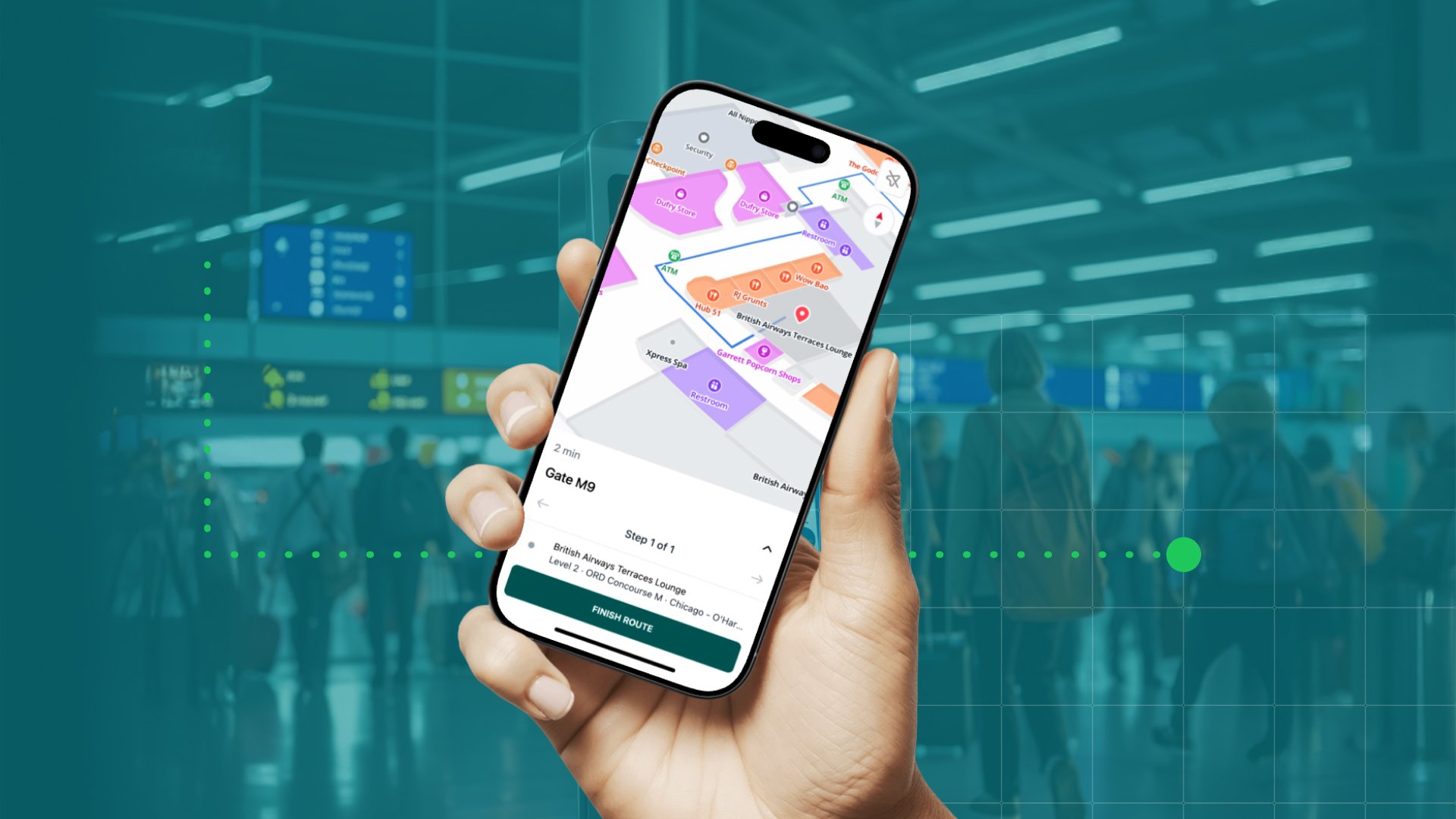In the latest episode of Spatial Experience Design, MapsPeople’s Søren Vasø sits down with Johnny Sloan, SVP at Leap, to talk about what happens when events stop being static and start getting smart. Together, they explore what it takes to transform a high-density, high-stakes environment—like a comic con or fandom expo—into a thoughtfully designed journey that balances personalization with crowd flow, vendor needs, and real-world logistics. Their conversation touches on the friction points that event organizers are trying to solve, from helping attendees navigate chaotic venues, to using AI and data to surface the right content at the right time, to redefining what a “successful” event experience looks like from a metrics standpoint.
Key Topics:
-
- Personalization through interest-based routing
- Booth discovery and vendor visibility
- Scavenger hunts as engagement tools
- Activation metrics vs. ticket sales
- AI-driven suggestions and routing
At Comic-Con, an international trade show, or any large event sprawling across multiple floors—it’s easy to get lost. Not just physically, but lost in the experience. You might miss a once-in-a-lifetime celebrity panel, walk past the most relevant booth without realizing it, or spend too much time trying to find lunch. What if the experience could guide you instead?
From Static Layouts to Guided Journeys
Attendees used to receive a floor map and hope for the best. Today, the journey combines intention with discovery. People arrive with specific goals in mind, but the most valuable experiences often come from what they encounter along the way.
When time is limited and options are overwhelming, the biggest risk is missing the most meaningful moments.
A modern event strategy begins before attendees arrive. Contextual schedules, early nudges, and personalized recommendations help shape a more focused and rewarding experience. Still, one core challenge remains: the attendee journey is highly individual, while the venue layout is fixed. Spatial design provides the connection point between the two.
Designing for Movement Instead of Static Maps
Spatial data now plays a central role in shaping decision-making. Digital maps enriched with real-time and historical data help organizers detect congestion, guide traffic, and elevate the visibility of key destinations. Attendees receive smarter route suggestions based on their current location, time, and interests rather than relying on a static list of booth numbers.
These tools reduce inefficiencies, link discovery to action, and elevate the map from a reference to a strategic interface.
Supporting Discovery and Intention Equally
Some attendees arrive with detailed agendas. Others explore as they go. The best-designed systems support both approaches.
Searchable vendor directories serve the needs of focused visitors. Engagement tools like scavenger hunts, curated content paths, and interest-based trails support discovery. When integrated into an event app, these experiences become flexible, allowing each person to follow a path aligned with their attention span, preferences, and pace.
This dual approach also provides organizers with valuable insights about how people move, what draws their interest, and where engagement drops off.
Activation Is the New Metric
Attendance alone no longer reflects success. Small moments of engagement—like scanning a badge to receive a custom schedule or joining an interest-based activity—are now stronger indicators of intent and satisfaction.
These activations lead to better personalization in the moment and better planning in the future. For organizers focused on long-term value and measurable ROI, engagement data has become essential.
Extending the Experience Beyond the Venue
The attendee experience includes everything that happens around the main event. People need guidance on where to park, eat, queue, and exit. As events expand across campuses or into city-wide formats, this surrounding context becomes a critical part of the overall journey.
Mapping tools that cover nearby restaurants, shuttle logistics, entrance flows, and transportation hubs help reduce confusion and reinforce that the entire environment is thoughtfully considered.
Smarter Search Starts With Better Metadata
Future-ready event design will rely on search that feels conversational. Attendees will expect to ask, "Where can I find retro merch nearby?" and get precise, useful answers.
This level of responsiveness depends on structured metadata. When booths, sessions, and services are tagged by category, topic, or inventory, content becomes far easier to surface. A well-organized backend ensures attendees receive recommendations that match their actual interests.
A Responsive, Layered Experience
Spatial data turns a static venue into a dynamic environment. It informs how people move, how they discover, and how organizers plan. With the right tools in place, the event becomes more than a collection of booths and time slots—it becomes a system that adapts in real time to individual needs.
When someone walks away saying, "That was worth it," it's rarely because of one panel or product. It’s the result of an experience that felt fluid, personal, and intentionally designed from start to finish.
That is the impact of spatial experience design.
Additional Resources:
July 14, 2025


.png)